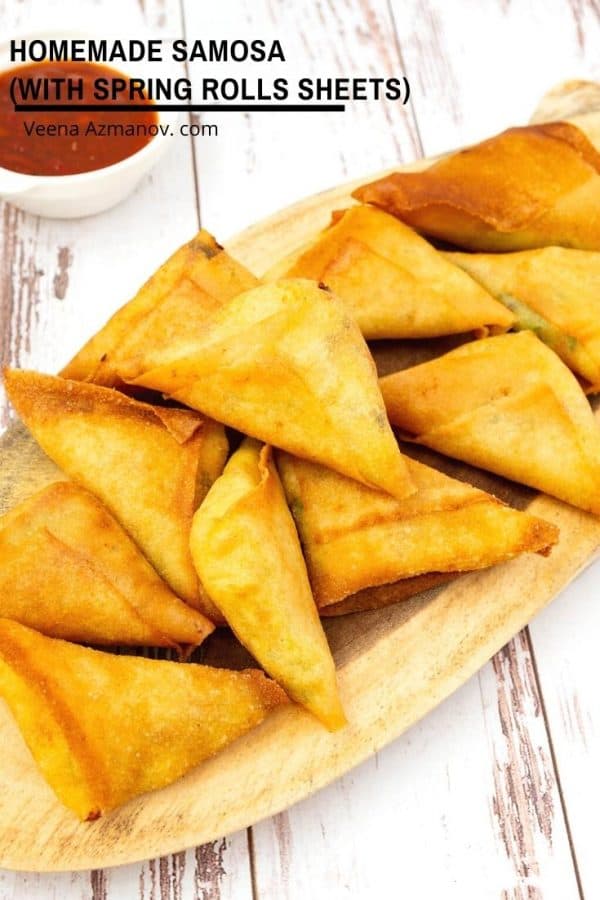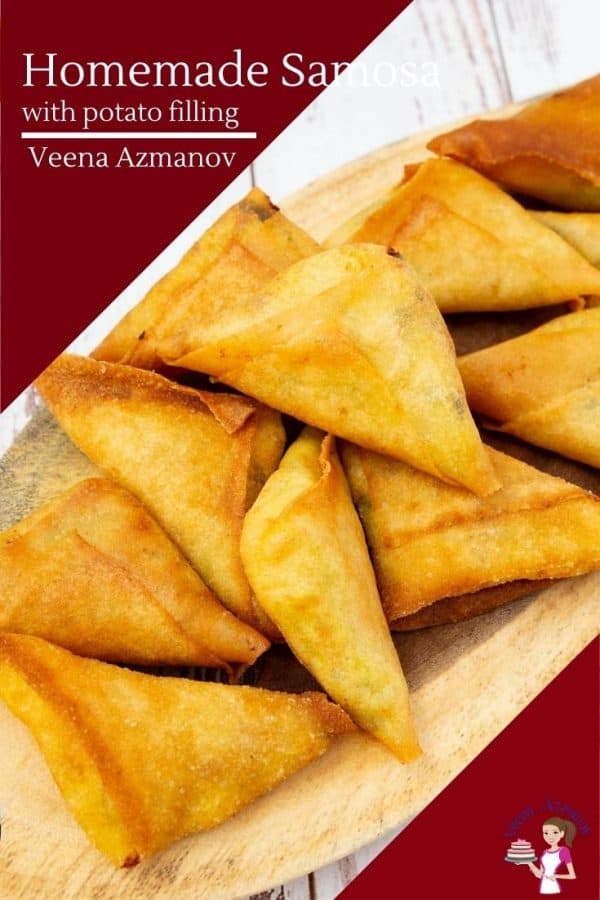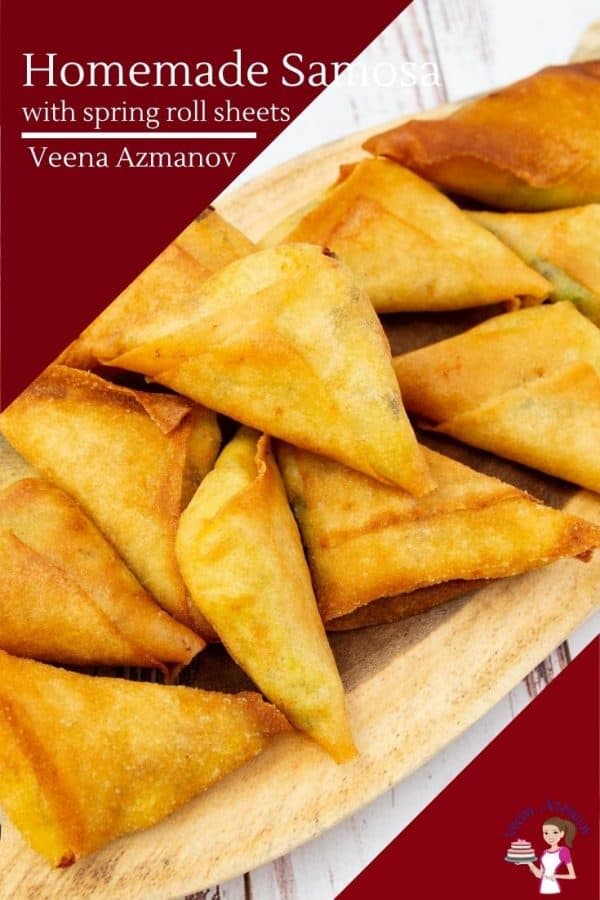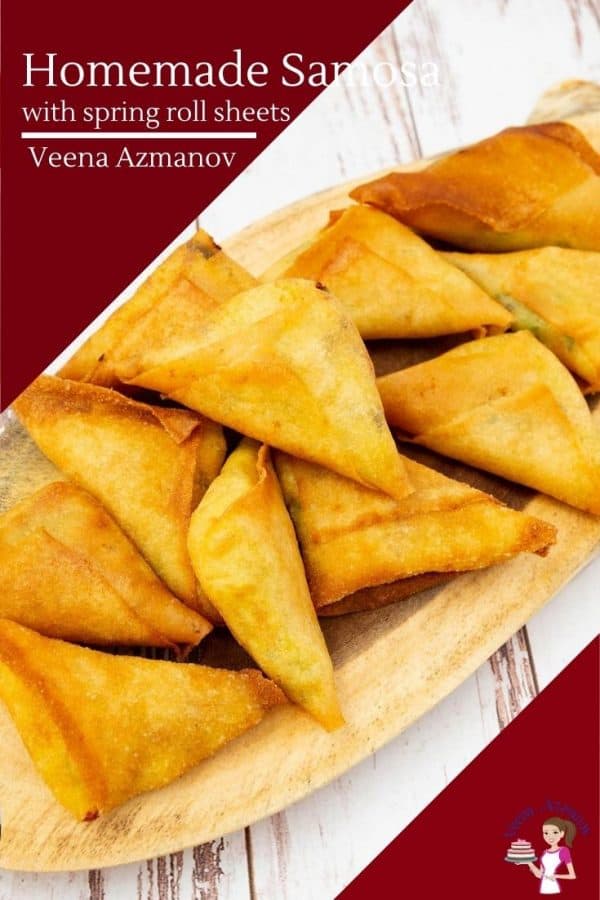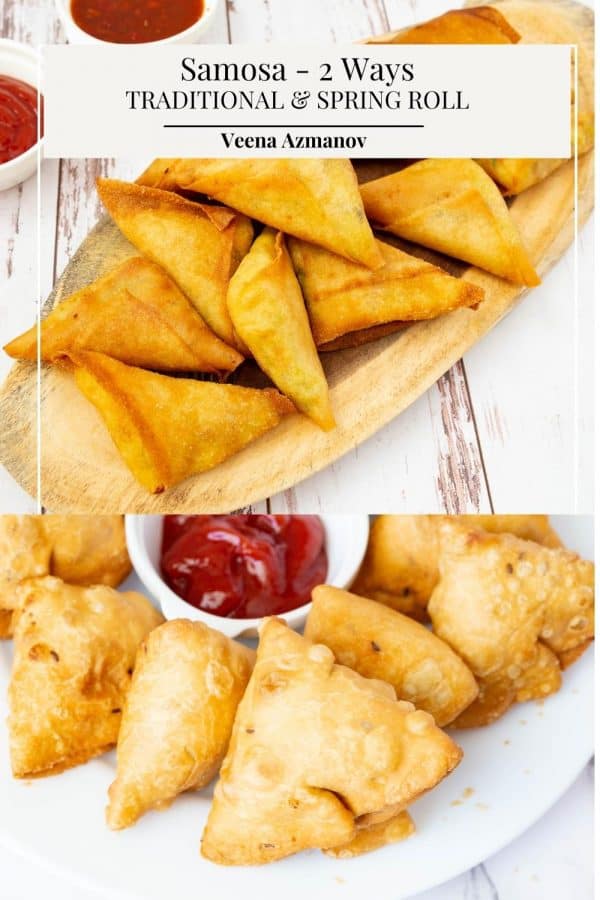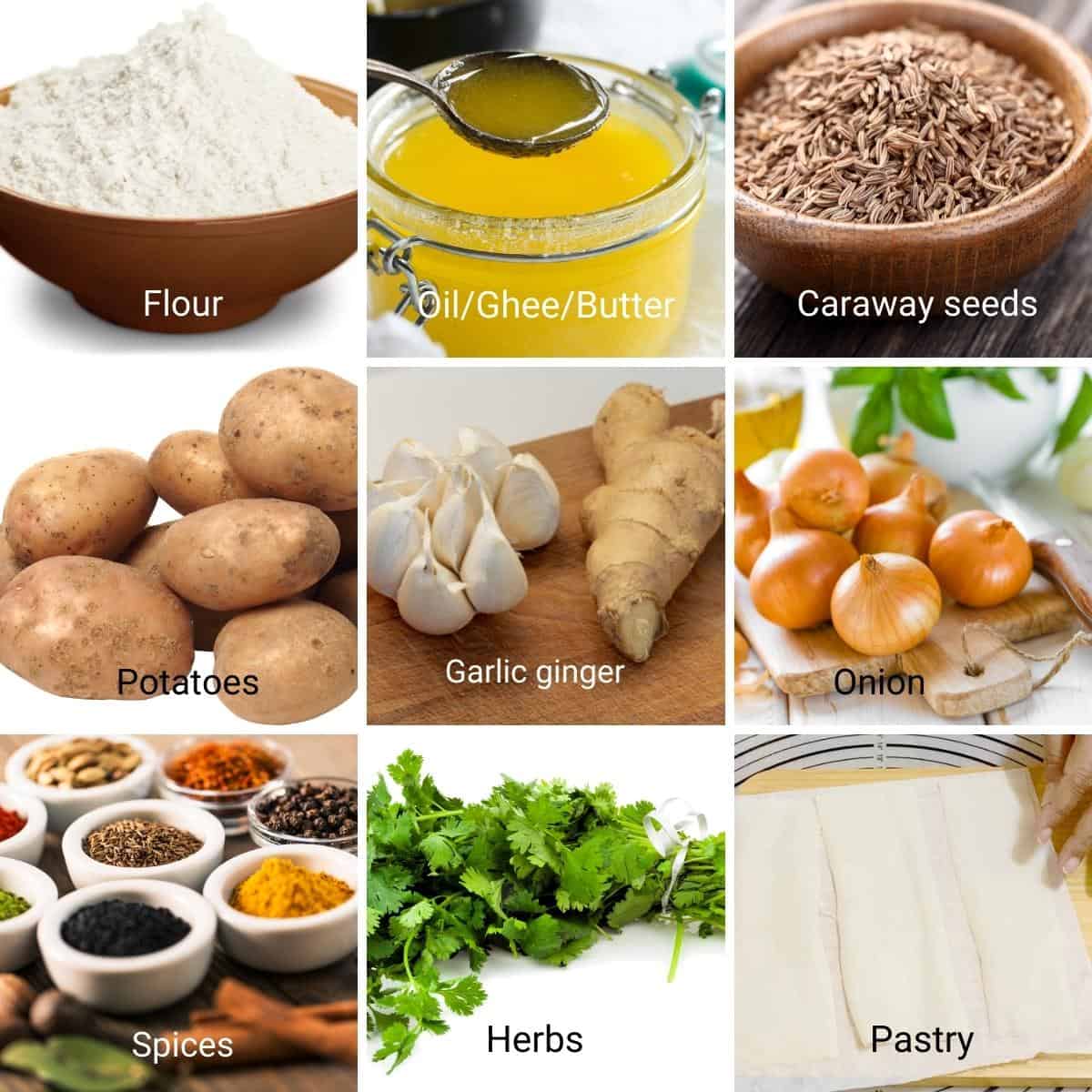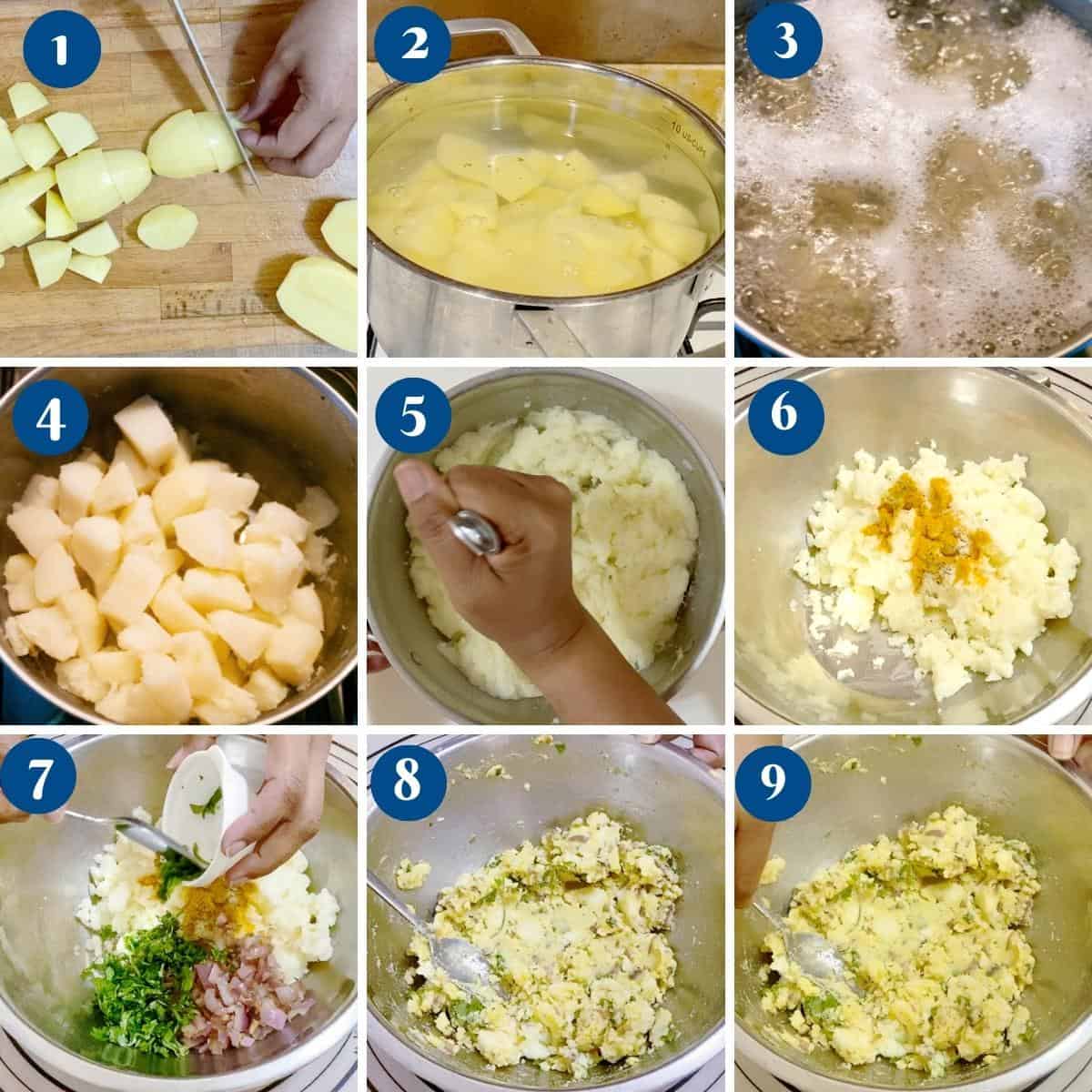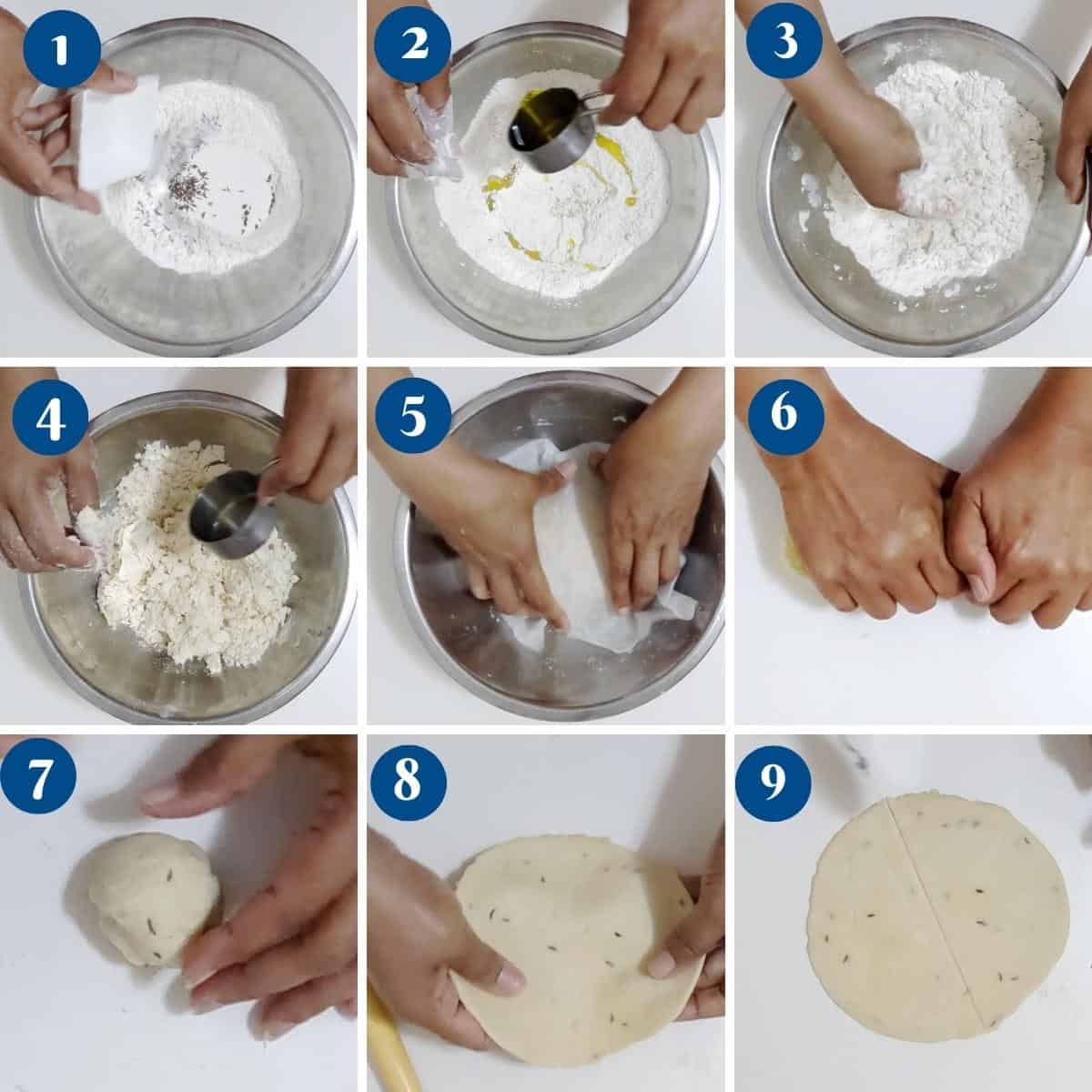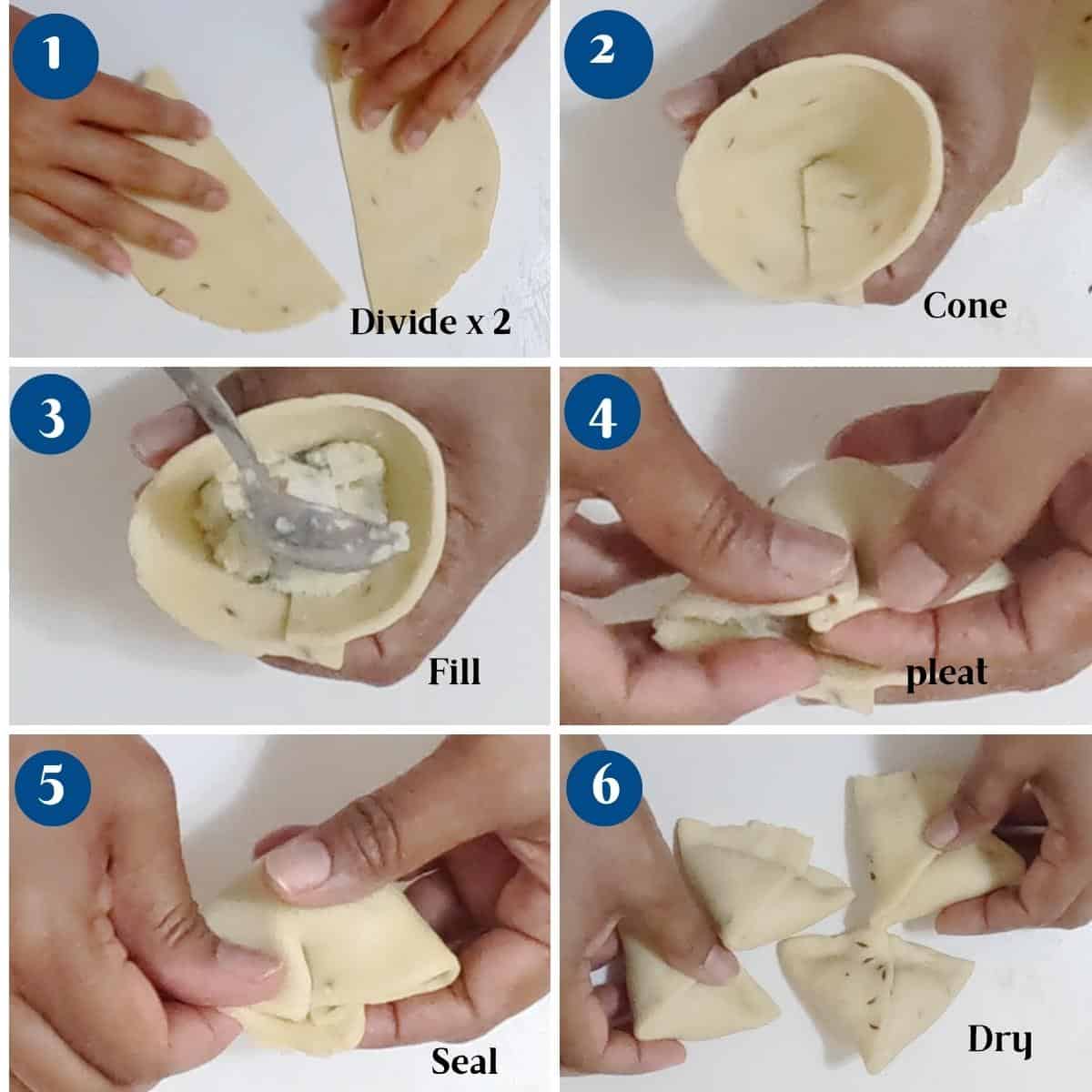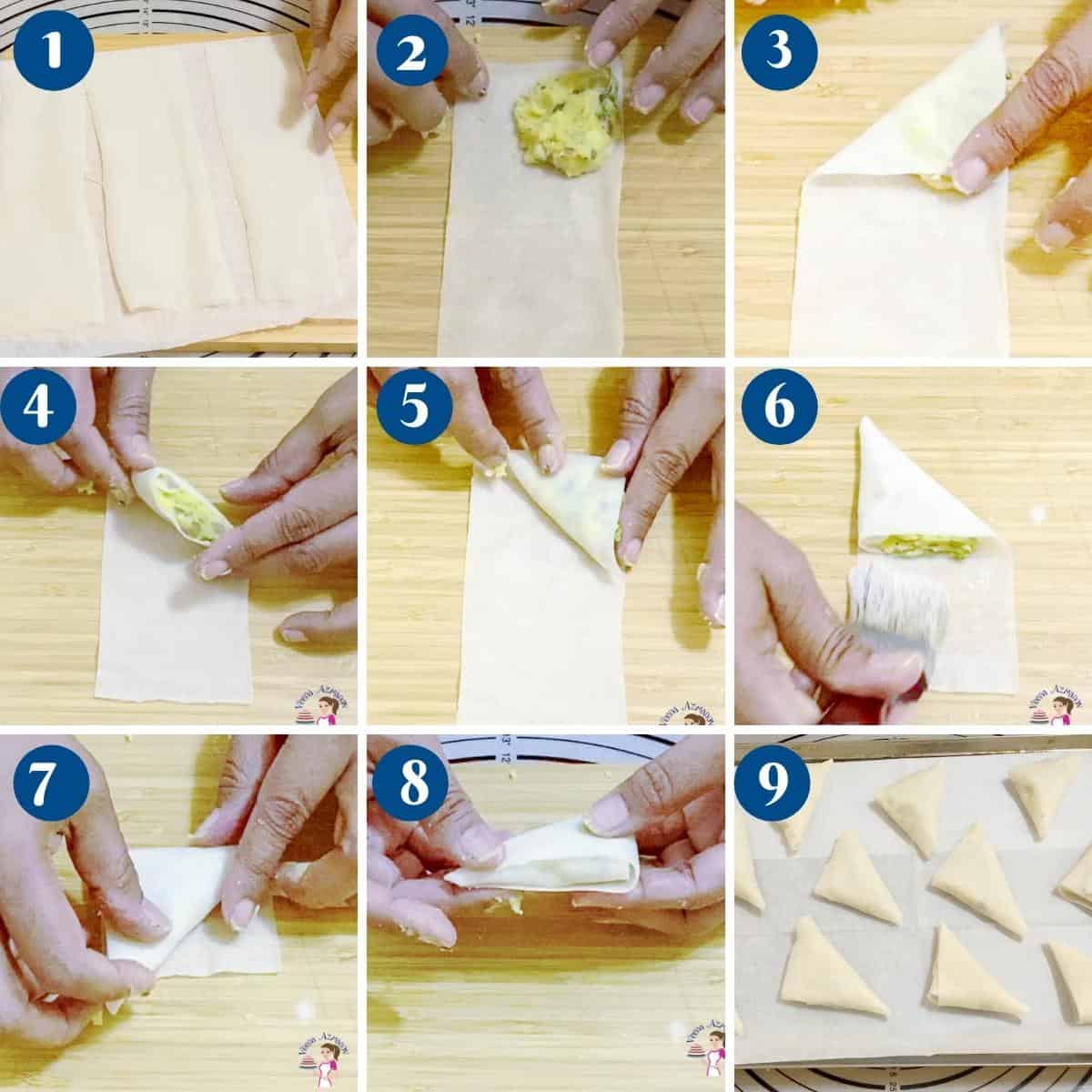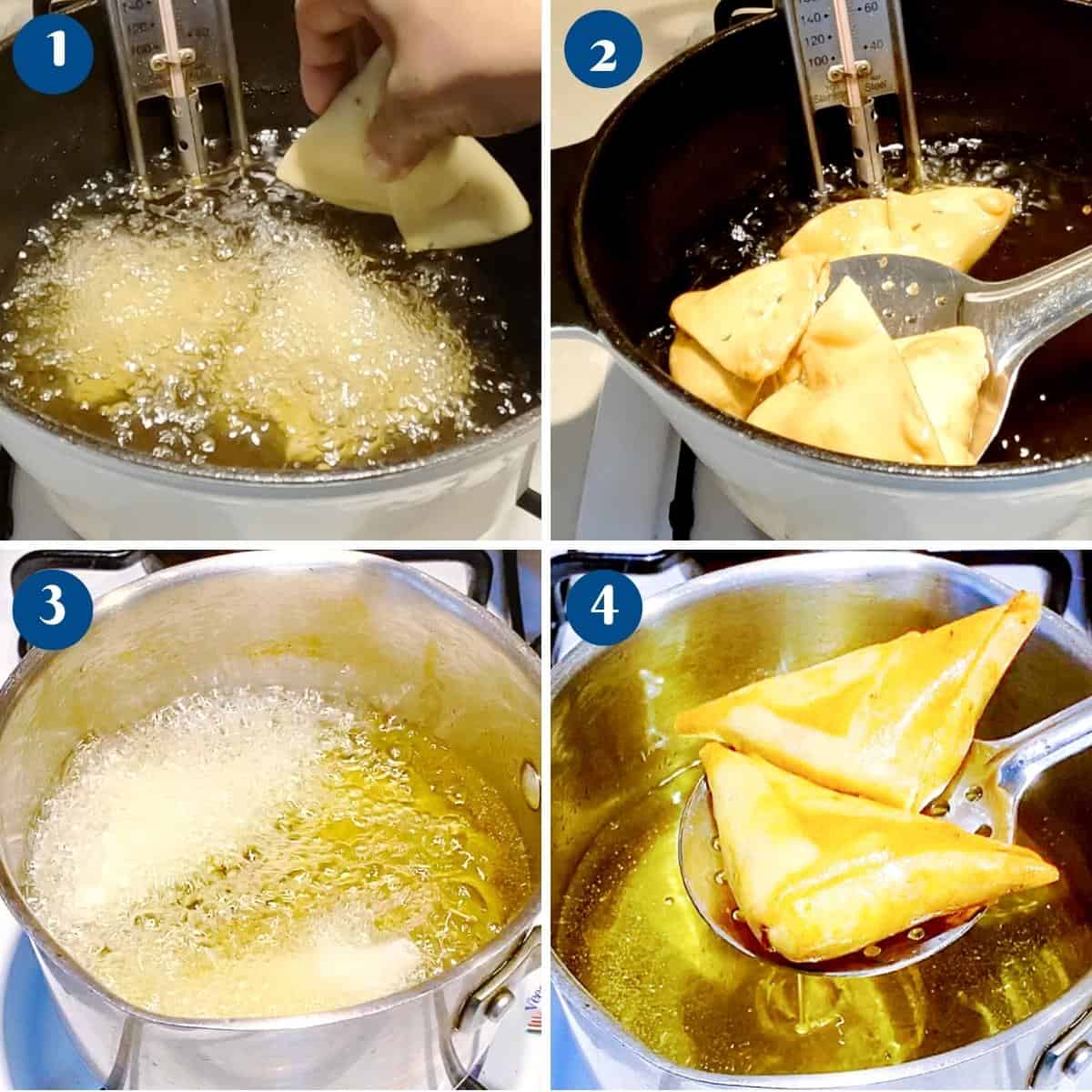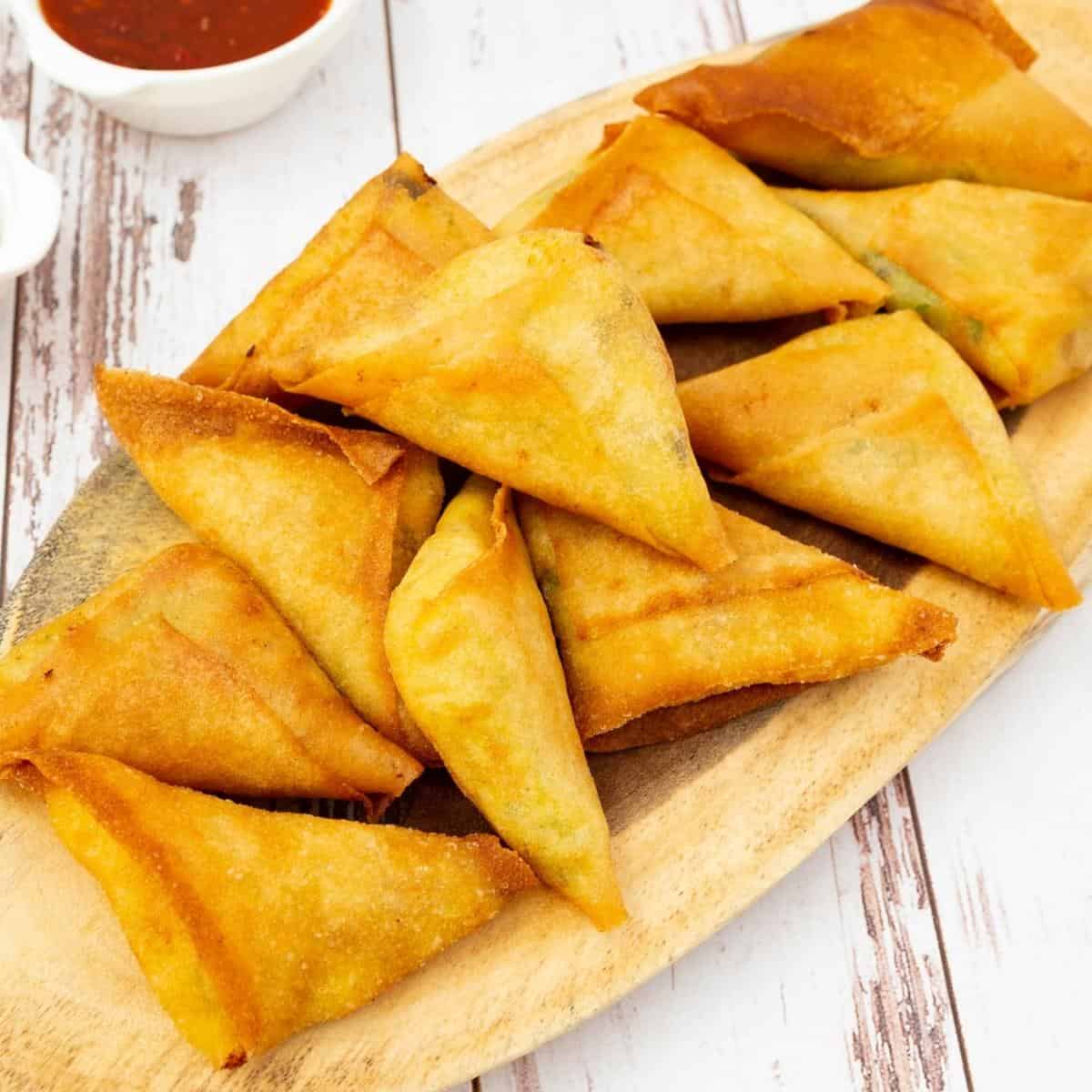Growing up in an Indian home, homemade samosas were a labor of love. Making the dough, the filling, and then, of course, the job of filling and folding the samosas. A big project. And mom made it with so much love we just took it all for granted. Until, of course, you have to do it yourself. Then, you end up looking around for shortcuts to cut corners. I love making authentic samosa, but I also love my quick and easy method of using ready-to-use filo pastry. So, that’s what I share with you today.
Why make this recipe
This is a very simple-to-make samosa recipe. There are great for afternoon snacks or to serve as appetizers before a meal. I usually make larger ones for snacks and mini samosas for appetizers These crispy snacks are filled with a potato mixture. But, you can also use other savory fillings such as paneer, ground meat, etc. Today I give you two methods to make samosa. The authentic Punjabi samosa recipe is made from scratch Or he semi-homemade using spring roll sheets. Pastry– I have given you two options for the pastry The authentic samosa pastry recipe if you want to make it from scratch. It does not need many ingredients just flour, salt, and water. Instead of making the authentic samosa pastry, we are using spring roll wrappers. If you’ve tasted spring rolls or egg rolls, then you know that when they are deep-fried, they become golden and crispy, which is what we want with our samosas. Filling/Stuffing – You can use leftover mashed potatoes or you can boil some potatoes and give them a quick mash. The filling is very simple and easy with most of the ingredients already in your pantry. Serving – My kids love to have these with ketchup and mayo but authentic samosa is served with coconut chutney, mint chutney, and or sweet tamarind chutney
Step-by-step: How to make samosa
Mashed potato filling – option 1
Boil potatoes – Wash, peel, and dice the potatoes into equal size pieces about 1 1/2 inch. Boil the potatoes in a large pot of cold salted water. Bring to a boil and cook for 10 to 12 minutes until fork tender. Drain the potatoes in a colander (or use a slotted spoon) and put them back into the same pot on low heat for another two minutes. Cool completely.Pro tip – It is easier to work with cold mashed potatoes as it does not soften the spring roll sheets. Alternatively, you can use leftover mashed potatoes. Combine – In a mixing bowl, combine mashed potatoes with sauteed onions, salt, pepper, turmeric, and chopped parsley or cilantro. Combine well. Taste and adjust seasoning.Pro tip – sauteeing the onions in a teaspoon of oil will take the raw bite out of the onions but you can certainly use raw.
Vegetable filling – Option 2
Crackle – In a large skillet over medium-high heat, add the oil and crackle the mustard seeds followed by the cumin seeds and curry leaves. Saute – Turn to medium heat. Add the onions and saute until translucent. Add the garlic, ginger, and green chilies, and saute for another 30 seconds. Add spices and saute with a few tablespoons of water for 30 seconds.Pro tip – a few tablespoons of water will prevent the spices from burning. Simmer – Add the chopped vegetables, lemon juice, and cilantro. Season with salt and pepper. Cover the pan and cook on medium-low heat until the potatoes are tender. Mash – Once the potatoes are tender, gently mash the veggies with a fork or vegetable masher. You don’t want everything mashed, keep them coarse.Pro tip – mashing the veggies will make it easier to stuff the pastry but keep it coarse otherwise the juices will make the filling soggy.
Traditional samosa pastry dough (option 1)
Combine – In a bowl, add the flour, salt, and caraway seeds. Then add the melted ghee and rub it well in the flour.Pro tip – you want to spend some time rubbing the flour and ghee. This is the first secret to making a pastry-like dough. Knead – Next, add water and combine well. Make sure to use less rather than too much water. You want a flaky yet pliable dough. Cover the dough and let it rest for at least 15 minutes. Then, knead a few times more to make it smooth. You can also leave this dough in the fridge for up to 24 hours.Pro tip– the second secret to making a good pastry dough is not to over-knead it. Kneading too much will activate the gluten in the dough making it soft. We want a crispy flaky dough similar to shortbread. Rest – Once the dough is rested. Knead briefly to make it smooth. Then divide the dough in half and each half into 6 portions. (total 12 samosas) Roll – Gently roll each portion into a smooth ball. Let rest for 10 minutes. Then, roll each ball of dough into a circle approximately 6 to 7 inches (16 to 18 cm) in diameter. Each circle makes 2 samosasPro tip – resting the dough between steps will relax the gluten and prevent it from shrinking.
Fill – Cut each circle in half. Working with one semi-circle at a time fold it into a cone over the palm of your hand as shown in the video. Then fill the cone with your choice of filling and brush the top open edges of the cone with water. Seal the top ends close.Pro tip – a filled samosa should be stored sealed side down with the point facing up. This way they hold their shape better and you can accommodate more samosas on one baking tray. Air dry – Place the samosas on a baking sheet lined with parchment paper and place them seam-side down. Leave them open for no more than 15 minutes. This helps dry excess moisture and makes them crispy.Pro tip – these samosas can be covered and kept in the fridge for up to 24 hours. You can also freeze them on a tray for up to a month. Thaw in the fridge overnight. Make sure to deep fry them just before serving.
Spring roll pastry samosa – (Option 2)
Divide each spring roll sheet into three, as shown in the video. Work with one piece at a time.Pro tip – Keep the remaining sheets wrapped under a clean kitchen cloth while you do the rest to prevent them from drying out. Place a generous amount of filling on one-third of the sheet. Fold the sheet into a triangle, as shown in the video. Brush the bottom 2-inch pastry with water to keep the seams closed.Pro tip – You can fill and fold these, then, keep them in the fridge until ready to serve.
Deep fry
In a large pot, pour the oil and heat it on medium-high heat. The oil must be hot but not too hot about 325°F to 350°F. No more.Pro tip – as a guide for oil temperature – If you drop a samosa in there it should come up in 30 seconds. If it comes up before that meaning it’s too hot, and of course, longer than it’s not hot enough. Deep fry in batches until golden brown. The traditional pastry dough samosas (dough option 1)will take about 4 to 6 minutes each and the samosas with spring roll wrappers for about 2 to 3 minutes each. Remove on paper hand towels to absorb excess oil. Serve along with some sauce and chutney. I serve with my green chutney, tomato ketchup, and tamarind chutney.
Variations for samosa filling
Beef samosa – use a ground beef filling we used in our meat puffs and use it to stuff instead of potatoes and peas. You can also use ground poke with shredded cabbage for a twist. Sweet coconut samosa – made with a sweet coconut filling instead of savory and often served as a dessert or snack. Potato spring rolls – if you prefer you can roll these just as we do the Vietnamese spring rolls. They make the perfect potato summer rolls. Mushrooms samosa – use the mushroom mixture we made for our mushroom quiche and use it to stuff in the samosa. Cheese filling – Use the cheese filling we made in our recipe for cheese-stuffed pita and use it to stuff in the samosa.
Frequently asked questions
Thank you for sharing - Save for later
